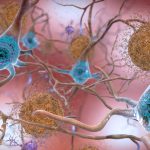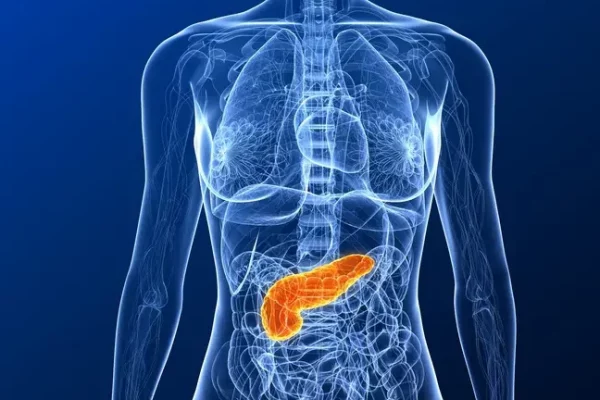by: Mackenzie Moore
For decades, health experts have touted the benefits of omega-3 fatty acids based on the paleo diet of Inuit tribes studied in the 1970s. Scientists correlated the decreased number of heart attacks in Arctic populations with the high levels of omega-3 fatty acids consumed through fatty fish and meats, but a closer look at the genes in an Inuit population in Greenland reveals a startling truth behind this high-fat diet. Led by project leader Rasmus Nielsen, an integrative biology professor at the University of California, Berkeley, a group of scientists suggests that Arctic peoples evolved genetic adaptations that enabled a higher consumption of marine mammal and fish fats, the predominant source of sustenance in an Arctic environment, by metabolizing polyunsaturated fats differently. This new discovery is the first evidence that human populations are adapted to particular diets and raises questions about whether omega-3 fats are beneficial for other populations.
The indigenous people of Greenland, the Inuit, subsisted on what became known as a “paleo diet,” a specialized diet consisting of protein and fatty acids, particularly omega-3 polyunsaturated fatty acids. The high levels of fat in their diet resulted from the limited food sources available in extreme conditions of the Arctic. The harsh environmental conditions prevented them from farming, and as a result, they relied primarily on what could be hunted: seal, fish, whale and other meats. Yet despite surviving on a diet rich in omega-3 polyunsaturated fats, they did not exhibit high rates of heart disease or heart attacks. In the 1970s, researchers studying the Inuit populations proposed that the low rates of heart disease were the result of omega-3 fatty acids from their diet. The market for omega-3 fatty acids from fish oil tablets as dietary supplements in the West exploded. Diet has always been an engaging topic for the general population; how one’s diet can be improved, what people should be eating, what they shouldn’t, and the consumption of omega-3 polyunsaturated fatty acids was proposed as beneficial.
The availability of different nutrients in different environments exerts a profound influence on genetic changes. An organism that is able to effectively and efficiently acquire and consume nutrients is more likely to survive and reproduce. Any mutations that aid this process can be considered positive and will be favored by natural selection. These individuals will pass on their genes and thus the population becomes better suited for survival in an environment. Such genetic mutations influenced by food consumption are found in humans as well. A common example is that of lactose tolerance. This is a genetic adaptation that is present in societies whose ancestors centralized around cattle domestication. It enables the digestion of lactose, an ability uncommon in adult mammals. Regions without a history of cattle domestication have populations that are intolerant to lactose digestion. Adaptations as a result of resource availability could then possibly extend to environmental restrictions on diet as seen in Arctic populations. The researchers from this study wondered whether the ability to metabolize a diet rich in polyunsaturated fatty acids without significant health consequences was a result of such a mutation.
Knowledge about the genetic basis of human adaptation to cold climates and lipid-rich diets is limited. However, studies exploring these adaptations have been conducted. A recent study found evidence that a gene variant involved in the regulation of long-chain fatty acid, has been the target of strong positive selection in native Siberians, possibly driven by adaptation to a cold climate or to a high-fat diet.
Encouraged by these results, scientists led by University of California, Berkeley researcher and professor Rasmus Nielsen performed a scan for signatures of genetic adaptation in the population of Greenland. The population used in this study were descendants of Inuits that arrived in Greenland “less than 1000 years ago” (Nielson 2015), but because they inhabited Arctic territory for thousands of years prior, they had most likely adapted to the cold climate and paleo diet in omega-3 polyunsaturated fatty acids.
Nielsen and his fellow researchers began by looking for genetic differences between a 191 Inuit in Greenland, 60 Europeans, and 44 Han Chinese. They used an Illumina MetaboChip, an array enriched with single-nucleotide polymorphisms (SNPs) identified in genome comparison studies that investigated gene variance and its association with cardiometabolic phenotypes, the observable characteristics of the genetic makeup that controls metabolism. According to the paper published in Science, nearly 100 percent of the Inuit exhibited genetic mutations relating to the metabolization of omega-3 polyunsaturated fatty acids, while only 2 percent of Europeans and 15 percent of Han Chinese had variances in the examined genes. When the genomes were scanned for signatures of adaptation, specific genes that regulate levels of HGH in the human body, the strongest signal was located in a cluster of genes that regulate the production of enzymes known as fatty acid desaturases that determine polyunsaturated fatty acid levels. “Our results pointed directly to one group of genes, the FADS1, 2, and 3 group, where we had an extremely strong signal,” Nielsen says. “They regulate how much of these omega-3s and omega-6s you make yourself naturally.” The possible alleles are associated with metabolic and physiological phenotypes. The genes under investigation slow the body’s natural production of omega-3 polyunsaturated fats. Due to the high levels of omega-3 in the Inuit paleo diet, Nielsen explains that “there was much less need for the bodies to produce their own fats, so not only did they produce less, but they also helped break down the fatty acids that were being ingested.” The genetic mutations not only regulates the breakdown of fatty acids, but they also lower LDL cholesterol and have an effect on height and weight. Inuit populations exhibit profound physiological effects, they tend to be “at least an inch shorter and 10 pounds lighter with this variance” (Jergensen, 2015). “It’s quite extreme to find a group of genes that have such a measurable impact on metabolism and physiology,” Nielsen says. “Because such traits tend to be highly polygenic, they are difficult to trace, which is one of the reasons these results are so incredible, they clearly show a concentrated link between diet and genetic adaptation that controls the body’s functions”.
Dr. Nielsen and his fellow researchers are currently investigating the long-term effects of the gene variants discovered through this investigation. This will strongly influence future diet based research and analysis of human metabolism in relation to regional genetic adaptations. Nielsen and his team worked closely with the Greenlandic government during their study, in part to further health care research into the detrimental effects of the gene in modern society. “If the individuals with these particular mutations switch to a diet that is high in carbohydrates, particularly simple ones like glucose and sugar, they tend to be quite unhealthy”. Continuation of his research in Greenland will be used to develop treatments and improve the existing healthcare system, with the aim of eventually establishing a kind of personalized medicine, Nielsen says. “This particular subset of individuals, roughly 17% that are homozygous for this set of genes, are greatly predisposed, in fact, 10 times more likely, to get Type II diabetes. Soon these results could be translated to help people with their dietary choices and alternative treatments”.
Mapping these adaptations and understanding their effect on diet could lead to specialized, personalized diets for individuals based on their genomes. “We know now that the Inuit adapted to a very specific diet, just as individuals that lived in cattle domesticated societies, and we’re now looking at European ancestry linked to agrarian grain based diets, so what we discovered with the Inuit may be true for other populations”.






